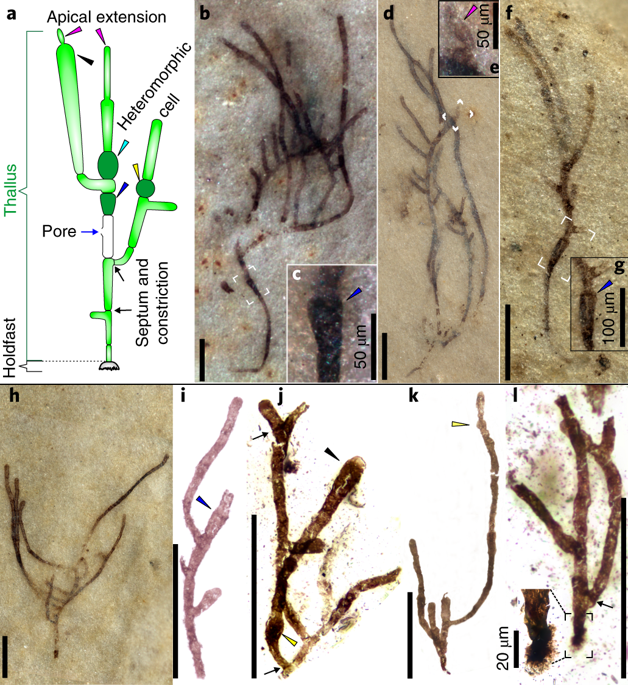Nature Ecology & Evolution ( IF 13.9 ) Pub Date : 2020-02-24 , DOI: 10.1038/s41559-020-1122-9 Qing Tang 1 , Ke Pang 2, 3 , Xunlai Yuan 2, 3 , Shuhai Xiao 1

|
Chlorophytes (representing a clade within the Viridiplantae and a sister group of the Streptophyta) probably dominated marine export bioproductivity and played a key role in facilitating ecosystem complexity before the Mesozoic diversification of phototrophic eukaryotes such as diatoms, coccolithophorans and dinoflagellates. Molecular clock and biomarker data indicate that chlorophytes diverged in the Mesoproterozoic or early Neoproterozoic, followed by their subsequent phylogenetic diversification, multicellular evolution and ecological expansion in the late Neoproterozoic and Palaeozoic. This model, however, has not been rigorously tested with palaeontological data because of the scarcity of Proterozoic chlorophyte fossils. Here we report abundant millimetre-sized, multicellular and morphologically differentiated macrofossils from rocks approximately 1,000 million years ago. These fossils are described as Proterocladus antiquus new species and are interpreted as benthic siphonocladalean chlorophytes, suggesting that chlorophytes acquired macroscopic size, multicellularity and cellular differentiation nearly a billion years ago, much earlier than previously thought.
中文翻译:

十亿年前的多细胞叶绿素
叶绿植物(代表 Viridiplantae 的一个进化枝和链藻的姊妹群)可能主导海洋出口生物生产力,并在光养真核生物(如硅藻、球石珊瑚和甲藻)的中生代多样化之前,在促进生态系统复杂性方面发挥了关键作用。分子钟和生物标志物数据表明,叶绿素在中元古代或新元古代早期发生分化,随后在新元古代晚期和古生代发生系统发育多样化、多细胞进化和生态扩张。然而,由于元古代叶绿素化石的稀缺,该模型尚未经过古生物学数据的严格检验。在这里,我们报告了丰富的毫米大小,大约 10 亿年前岩石中的多细胞和形态分化的大型化石。这些化石被描述为Proterocladus antiquus是新物种,被解释为底栖的 siphonocladalean 叶绿素,这表明叶绿素在近 10 亿年前获得了宏观大小、多细胞性和细胞分化,比以前认为的要早得多。











































 京公网安备 11010802027423号
京公网安备 11010802027423号